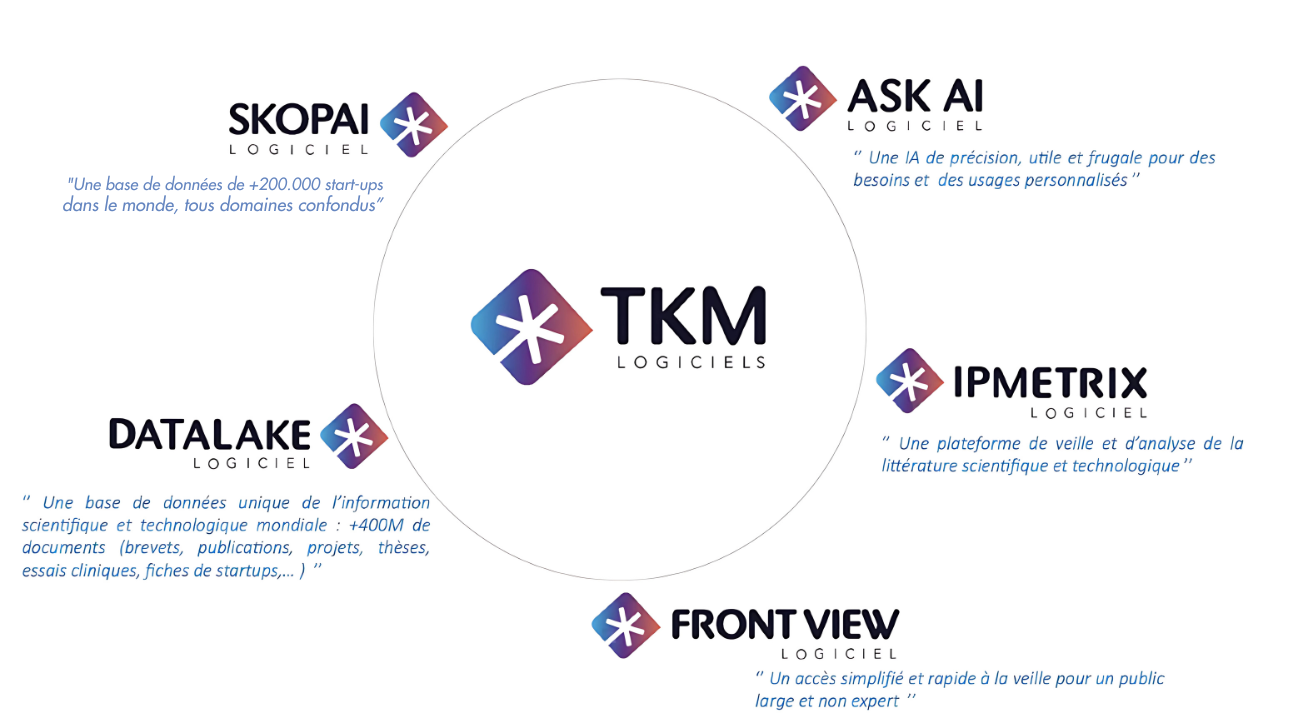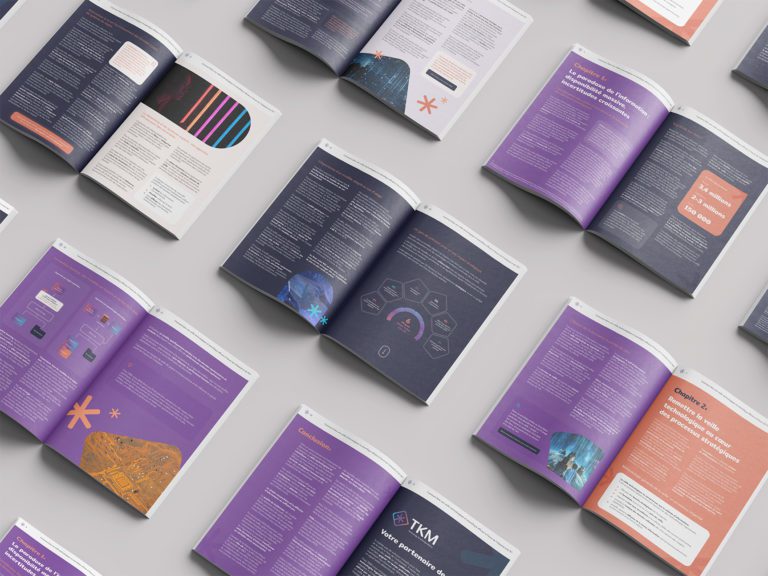 KNOWLEDGE MANAGEMENT : DEFINITIONS ET ENJEUX
KNOWLEDGE MANAGEMENT : DEFINITIONS ET ENJEUX
De la ruche à l’entreprise : l’importance du Knowledge Management
Le Knowledge Management n’est pas une notion récente, loin de là. Née dans les années 90, cette discipline s’est rapidement imposée comme un levier stratégique pour les entreprises. Pour le Davenport Group, le Knowledge Management est « l’exploitation systématique des connaissances de l’entreprise pour améliorer son fonctionnement ».
Des entreprises telles que Microsoft, iconiques dans le monde de la gestion de la connaissance, sont réputées pour leur culture d’innovation et leur capacité à s’adapter rapidement aux évolutions du marché. Pour cela, la firme de Redmond utilise des outils de gestion des connaissances pour partager les compétences et l’expertise entre ses employés, qu’ils soient aux États-Unis, en Inde, en France… ou partout dans le monde.
Ces outils, comme les wikis internes ou les forums de discussion, permettent de capitaliser sur les connaissances existantes et de les rendre accessibles à tous. C’est cette capacité à transformer les informations collectées en connaissances utiles qui fait de Microsoft, encore aujourd’hui, un leader sur son marché. Et aussi une magnifique ruche.
De la veille à l’actif immatériel : une évolution naturelle
Comment ces connaissances sont-elles obtenues en premier lieu ? C’est là que la veille entre en jeu. Dans l’entreprise, la veille est le processus par lequel les informations sont collectées, analysées et diffusées. Elle permet à l’entreprise de rester à jour sur les dernières tendances du marché, les évolutions technologiques, les mouvements de ses concurrents et bien d’autres facteurs clés.
L’actif immatériel, à l’autre bout du spectre, est le produit final de la gestion efficace de l’information et des connaissances. Voici quelques exemples courants d’actifs immatériels :
- Une base de connaissances
- Une propriété intellectuelle
- Une culture organisationnelle
- Un réseau, des relations, un carnet d’adresses
- Le savoir-faire de vos employés
On comprend à travers ces exemples que l’enjeu ne consiste pas seulement à rassembler de l’information pertinente. Il faut également lui donner une structure pour en simplifier l’accès et la rendre réellement utile.
Google, un autre champion de la gestion de la connaissance, est aujourd’hui l’une des plus grandes entreprises technologiques du monde. L’une des raisons de son succès réside dans sa capacité à créer des actifs immatériels précieux à partir de la veille. Cet actif immatériel, c’est une connaissance inégalée du comportement des utilisateurs sur Internet. Grâce à une veille constante et à l’analyse de milliards de requêtes, Google a pu développer des services toujours plus adaptés et optimiser ses revenus publicitaires.
Pas besoin de vous appeler Microsoft ni Google pour profiter des outils de la veille. Si votre ruche est petite, vous pouvez quand même pleinement profiter des outils et des méthodes du Knowledge Management. Mais avant de mettre en place de tels process, il faut d’abord comprendre ce qui ne va pas quand on essaie de s’en passer…
 COMMENT LE MANQUE DE STRUCTURATION DU TRAVAIL DE VEILLE NUIT AU KNOWLEDGE MANAGEMENT
COMMENT LE MANQUE DE STRUCTURATION DU TRAVAIL DE VEILLE NUIT AU KNOWLEDGE MANAGEMENT
La veille en entreprise : un trésor souvent inexploité
Pourquoi toutes les entreprises ne réussissent-elles pas à transformer leur veille en un actif immatériel précieuxcomme Google ?
Une des raisons est le manque de structuration du travail de veille. En l’absence de stratégie claire et de coordination entre les différentes parties prenantes, la veille peut rapidement devenir une tâche isolée et non structurée.
Les entreprises du secteur pharmaceutique illustrent souvent ce point de manière édifiante. Point positif : de nombreux ingénieurs font une veille poussée sur des sujets spécifiques. Point négatif : en l’absence de coordination, chacun effectue sa propre veille de maière isolée. Les connaissances ainsi acquises sont rarement partagées avec le reste de l’entreprise et risquent de disparaître lorsque le collaborateur quitte l’entreprise.
Cette situation est malheureusement courante dans de nombreuses organisations et freine l’efficacité de la gestion des connaissances. Elle est d’autant plus courante dans les fonctions où la veille individuelle est nécessaire, faisant passer l’intérêt collectif au second plan.
L’illusion de l’information facile : le piège de l’ère numérique
Dans le même temps, l’ère de l’information a radicalement changé la donne. Aujourd’hui, grâce à Internet, les entreprises ont accès à une quantité quasi illimitée d’informations. Mais cette abondance d’informations est à double tranchant. Sans une stratégie de veille structurée, les entreprises peuvent facilement être submergées par cette masse d’informations. On a tous connu ça un jour.
Illustrons cela… Votre entreprise dispose peut-être d’un site de vente en ligne. Grâce à Internet, vous avez accès à une multitude d’informations sur vos concurrents, vos clients, vos fournisseurs, etc. Sans une stratégie de veille adéquate, ces informations peuvent se transformer en un déluge de données indigestes. Vous risquez alors de vous retrouver paralysé, incapable de trier les informations pertinentes et de prendre des décisions éclairées.
 IPMETRIX : UN OUTIL SURPUISSANT, POUR ENFIN FAIRE DE SA VEILLE UN ACTIF IMMATERIEL
IPMETRIX : UN OUTIL SURPUISSANT, POUR ENFIN FAIRE DE SA VEILLE UN ACTIF IMMATERIEL
IPMetrix : un levier de transformation
Heureusement, il existe des outils qui peuvent aider les entreprises à surmonter ces défis. Le logiciel de veille stratégique IPMetrix en fait partie. Grâce à ses fonctionnalités avancées, il permet aux entreprises de structurer leur veille, de collaborer autour de l’information et de capitaliser sur leurs connaissances.
Pour le dirigeant de PME comme le directeur de la R&D, IPMetrix peut rapidement devenir un atout majeur. Il permet en effet de structurer le travail de veille et de le transformer en actif immaériel. Ainsi, même si un employé quitte l’entreprise, les connaissances qu’il a acquises ne sont pas perdues. Elles sont stockées dans IPMetrix et restent facilement accessibles à tous les autres membres de l’entreprise, bien plus que dans un sombre fichier Excel.
Un outil de capitalisation immatériel
IPMetrix est plus qu’un simple outil de veille. C’est une véritable plateforme de gestion des connaissances qui crée littéralement vos actifs immatériels. Par exemple, vous allez pouvoir construire une base de connaissances centralisée, ou mettre en place des profils de concurrence détaillés, ou encore bâtir des expertises sectorielles. Une fois ces actifs créés, il vous suffit de les alimenter, et surtout de les utiliser.
Avec IPMetrix, la veille ne disparaît pas : elle est capitalisée et partagée, contribuant ainsi à renforcer le patrimoine de connaissances de l’entreprise.
 L’AVENIR EST « JUSTE MAL REPARTI »
L’AVENIR EST « JUSTE MAL REPARTI »
Tout comme le pollen pour l’abeille, l’information est votre bien le plus précieux. Mais elle n’est précieuse que si vous savez la transformer. Chacune de vos sources d’information et de vos connaissances doit être valorisée, pour que votre veille vous aide à créer des actifs immatériels utiles. C’est le rôle du Knowledge Management, et des outils comme IPMetrix peuvent y contribuer de manière significative.
L’avenir appartient aux entreprises qui sauront faire de la veille un atout stratégique, en structurant leur démarche de veille et en capitalisant sur les connaissances acquises. Le miel de la ruche numérique est à la portéede ceux qui sauront l’extraire. Comme le disait l’écrivain de science-fiction William Gibson : “L’avenir est déjà là – il est juste mal réparti”. Il appartient à chaque entreprise de se donner les moyens de capter sa part.
TKM, c’est également toute une suite de logiciels pour vous accompagner dans vos projets d’innovation.

 KNOWLEDGE MANAGEMENT : DEFINITIONS ET ENJEUX
KNOWLEDGE MANAGEMENT : DEFINITIONS ET ENJEUX
 COMMENT LE MANQUE DE STRUCTURATION DU TRAVAIL DE VEILLE NUIT AU KNOWLEDGE MANAGEMENT
COMMENT LE MANQUE DE STRUCTURATION DU TRAVAIL DE VEILLE NUIT AU KNOWLEDGE MANAGEMENT
 IPMETRIX : UN OUTIL SURPUISSANT, POUR ENFIN FAIRE DE SA VEILLE UN ACTIF IMMATERIEL
IPMETRIX : UN OUTIL SURPUISSANT, POUR ENFIN FAIRE DE SA VEILLE UN ACTIF IMMATERIEL L’AVENIR EST « JUSTE MAL REPARTI »
L’AVENIR EST « JUSTE MAL REPARTI »
